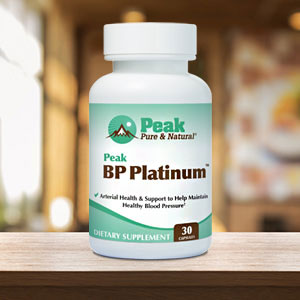Get Easy Health Digest™ in your inbox and don’t miss a thing when you subscribe today. Plus, get the free bonus report, Mother Nature’s Tips, Tricks and Remedies for Cholesterol, Blood Pressure & Blood Sugar as my way of saying welcome to the community!
The menopause change that increases stroke and Alzheimer’s risk

If you’re a woman between the ages of 40 and 60 and you’ve been having trouble with your memory, chances are you’re one of the 60 percent of women experiencing menopause-related brain fog.
Research shows women in midlife with lower estrogen levels performed worse on memory tests. And when their brains were scanned, these women showed more dramatic changes in brain activity.
You may be wondering whether these changes in brain activity could indicate an actual physical change in your brain. Unfortunately, new research suggests this concern may be well-founded…
Menopausal women show more brain changes
A recent German study examined 3,410 people to determine the role menopause may play in the prevalence of white matter hyperintensities (WMHs). These brain biomarkers, visible as tiny lesions on brain scans, become more prevalent with age or with uncontrolled high blood pressure. Some studies have linked WMHs with a higher risk of stroke, Alzheimer’s disease and cognitive decline.
The average age of people in the study was 54 years old. About 58 percent of them were women, and of those women, 59 percent had gone through menopause. In addition, 35 percent of all participants had high blood pressure, with half of those having uncontrolled high blood pressure.
The researchers looked at each participant’s MRI brain scans to identify and calculate the number of WMHs. After adjusting for age and risk factors such as high blood pressure and diabetes, results showed postmenopausal women had more WMHs when compared with men of a similar age.
In participants ages 45 and older, women who had passed through menopause had an average total WMH volume of 0.94 ml compared to 0.72 ml for men in the same age group. The average total volume for these brain biomarkers in all participants was 0.50 ml.
Results also indicated the increase in WMHs accelerated with age and at a faster rate in women than in men.
When comparing pre- and postmenopausal women ages 45 to 59, researchers found the postmenopausal women had an average total WMH volume of 0.51 ml compared to 0.33 ml for premenopausal women.
Premenopausal women and men of a similar age did not show any difference in the average amount of WMHs.
“White matter hyperintensities increase as the brain ages, and while having them does not mean that a person will develop dementia or have a stroke, larger amounts may increase a person’s risk,” says study author Dr. Monique Breteler of the German Center of Neurodegenerative Diseases (DZNE) in Bonn, Germany.
“Our results imply that white matter hyperintensities evolve differently for men and women, where menopause or factors that determine when menopause starts, such as variations in the aging process, are defining factors,” Breteler adds.
Hormone therapy made no impact
There was no difference between pre- and postmenopausal women using hormone therapy, suggesting that hormone therapy after menopause may not protect the brain.
Also, regardless of menopausal status, women with uncontrolled high blood pressure had higher amounts of WMHs than men. The researchers observe that high blood pressure has been known to affect the small blood vessels in the brain which can lead to an increase in these brain biomarkers.
“The results of our study not only show more research is needed to investigate how menopause may be related to the vascular health of the brain,” Breteler says. “They also demonstrate the necessity to account for different health trajectories for men and women, and menopausal status. Our research underscores the importance of sex-specific medicine and more attentive therapy for older women, especially those with vascular risk factors.”
The study was limited in that researchers didn’t know the exact age of menopause onset or whether some participants were perimenopausal.
Can WMHs be prevented?
One of the best ways to stave off WMHs is to manage your blood pressure, especially as you enter your 40s. Make sure you follow a low-salt, heart-healthy eating plan like the Mediterranean or DASH diets. For women, eating Mediterranean has the additional benefit of reducing menopausal symptoms like hot flashes and lowering the risk of cognitive decline.
Bear in mind that even if your blood pressure isn’t quite high enough to be classified as hypertension, it may be high enough to cause damage to the tiny blood vessels in your brain that lead to WMHs. Pay particular attention to your diastolic blood pressure, the bottom number of your blood pressure reading, which reflects your blood pressure between heartbeats.
Research shows a strong link between changes in diastolic pressure in people in their 40s and 50s and more extensive brain damage years later. This was true even if the reading was only 90, which is only 10 points above the maximum “normal” reading of 80.
One way to reduce diastolic blood pressure is to get exercise. A steady routine of walking, swimming, biking or running strengthens your heart and helps it pump with less effort. Exercise also helps reduce stress, another risk factor for high blood pressure. As a bonus, exercise helps banish the brain fog that can come with menopause.
Editor’s note: There are perfectly safe and natural ways to decrease your risk of blood clots including the 25-cent vitamin, the nutrient that acts as a natural blood thinner and the powerful herb that helps clear plaque. To discover these and other secrets of long-lived hearts, click here for Hushed Up Natural Heart Cures and Common Misconceptions of Popular Heart Treatments!
Sources:
Study Finds Women Have More Brain Changes After Menopause — American Academy of Neurology
The Relation Between Sex, Menopause, and White Matter Hyperintensities: The Rhineland Study — Neurology
How to Lower Diastolic Blood Pressure | 5 Best Strategies — Epic Heart & Vascular Center













